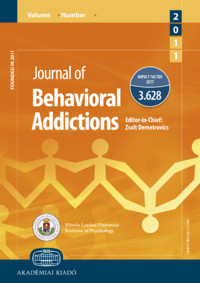Linking temporal-parietal junction to internet addiction tendency: Moderating effect of critical thinking
Linking temporal-parietal junction to internet addiction tendency: Moderating effect of critical thinking
Author(s): Di Liu, Yuhe Ma, Kaixiang Zhuang, Qunlin Chen, Baoguo Shi, Jiang QiuSubject(s): Behaviorism
Published by: Akadémiai Kiadó
Keywords: internet addiction tendency; critical thinking; GMD; TPJ; moderating effect
Summary/Abstract: Backgrounds and aims: Internet addiction (IA) is a common internet-related addictive behavior. An enormous amount of previous research on IA disorders (IADs) have paid attention to the neural basis of abnormalities, while few studies have elucidated the neural distinctions of IA tendency in general population. Methods: The current study examined the neural basis of IA tendency combining with voxel-based morphometry (VBM) from the average student body (N 5 244). Results: As the results presented, the gray matter density (GMD) of the left temporal-parietal junction (TPJ) was positively correlated with Internet Addiction Test (IAT) score. Further analysis revealed that critical thinking moderated the path between GMD in the TPJ and IA tendency. Specifically, the correlation between GMD in the TPJ and IA tendency was weaker for those with a higher critical thinking disposition. Discussion and conclusion: Higher critical thinking show a hindering effect in susceptibility to IA based on the neural basis of temporal-parietal junction differences.
Journal: Journal of Behavioral Addictions
- Issue Year: 10/2021
- Issue No: 3
- Page Range: 759-766
- Page Count: 8
- Language: English

